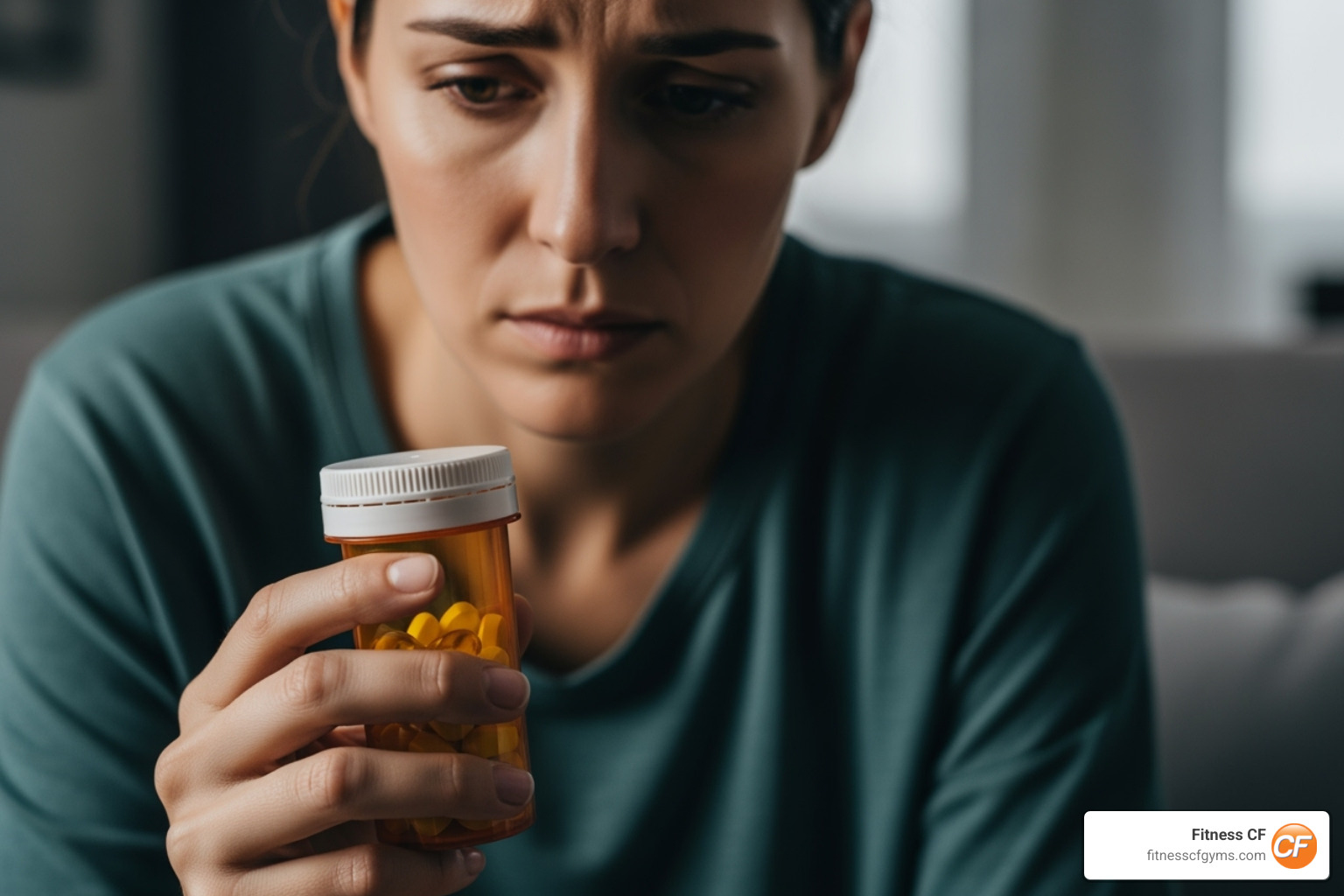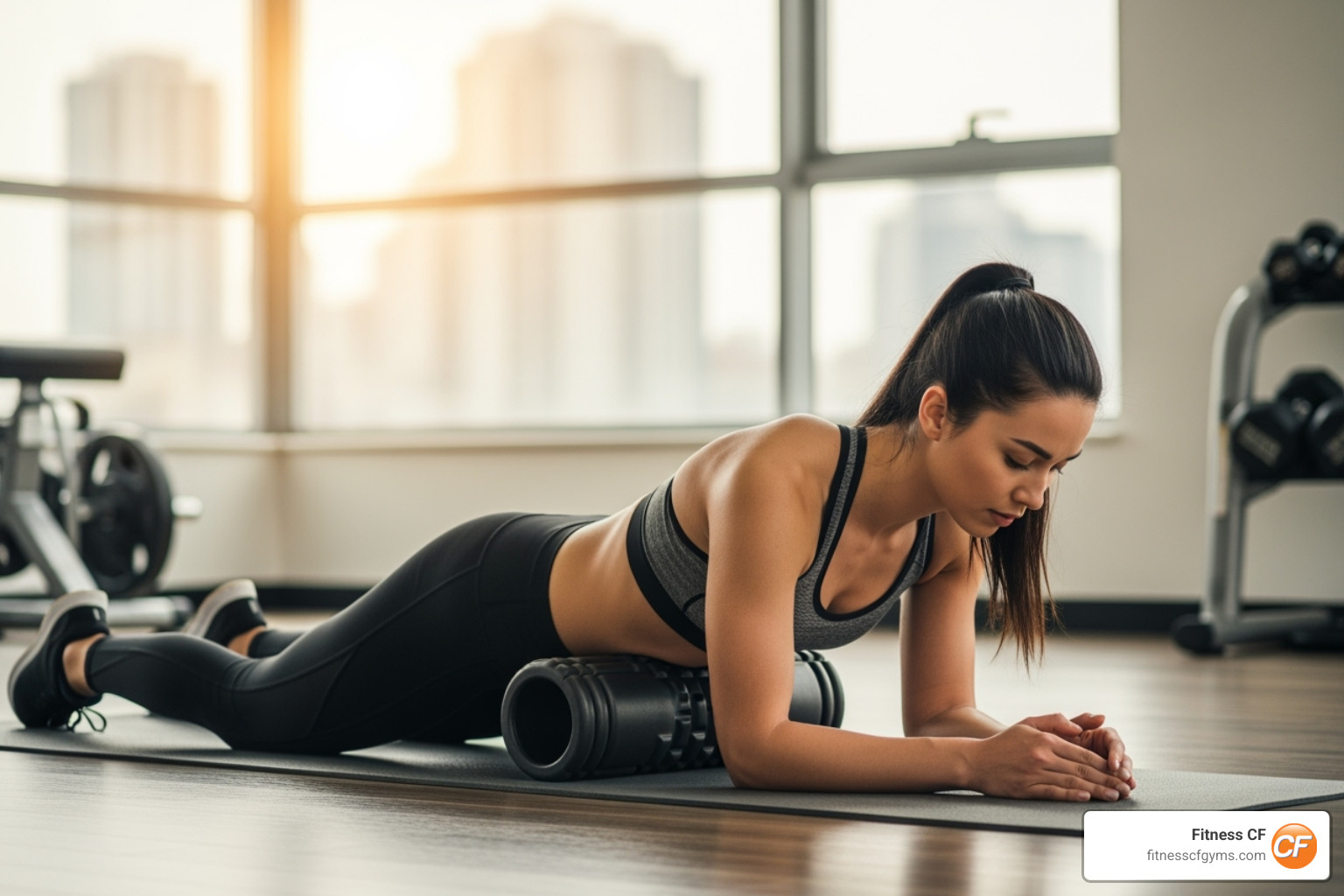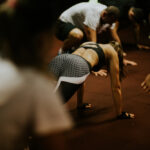Painkillers for DOMS: What Works, What Doesn’t, and Why You Might Think Twice

Why DOMS Pain Relief Matters for Your Fitness Journey
When it comes to the best painkillers for DOMS, options like ibuprofen and naproxen target inflammation, while acetaminophen handles general pain. However, research suggests these pills might hinder muscle recovery.
Quick Answer for DOMS Pain Relief:
- NSAIDs (Ibuprofen/Naproxen): Reduce inflammation but may slow muscle growth.
- Acetaminophen: A safer choice for occasional pain that doesn’t interfere with inflammation.
- Natural Alternatives: Active recovery, nutrition, and sleep are more effective long-term.
- Best Approach: Use painkillers sparingly and prioritize natural recovery methods.
We’ve all felt that satisfying ache after a great workout. This is delayed onset muscle soreness (DOMS), a sign your muscles are adapting and getting stronger. But when the soreness makes daily movement a challenge, reaching for a painkiller is tempting.
The relationship between painkillers and muscle recovery is complex. While they offer temporary relief, they can interfere with the strength and endurance gains you’re working for. Understanding when to use pain relief—and when to let your body heal naturally—is key to long-term fitness and health.
With over 40 years in the fitness industry, I’ve learned that the most effective recovery strategies often don’t come from a bottle. The goal isn’t just to feel better today, but to build a stronger body for tomorrow.

What is DOMS and Why Does It Happen?
Delayed Onset Muscle Soreness (DOMS) is the stiff, achy feeling that appears 12 to 72 hours after a challenging workout. Far from being a problem, it’s a sign of progress and a normal part of getting stronger.
When you push your muscles with new or intense exercises, you create microscopic tears in the muscle fibers. This is especially common with eccentric exercises, where the muscle lengthens under tension, like lowering a weight in a bicep curl or walking downhill.

These micro-tears trigger inflammation, your body’s natural healing response. This process brings nutrients to the damaged area to repair the fibers, building them back stronger and more resilient. While this inflammation causes the soreness that peaks between 24 to 48 hours, it’s the very mechanism that allows strength training to improve muscle mass, bone density, and metabolism.
Understanding DOMS as a positive signal helps you make smarter recovery choices. Instead of immediately reaching for the best painkillers for DOMS, you can appreciate the process and support your body’s incredible ability to adapt and improve.
Should You Use Painkillers for DOMS? What Science Says
When DOMS makes movement difficult, it’s natural to consider a painkiller. But it’s crucial to understand how they work. Over-the-counter options fall into two main categories: NSAIDs (nonsteroidal anti-inflammatory drugs) and acetaminophen.
| Painkiller Type | Examples | Primary Action | Effect on DOMS Pain | Effect on Inflammation | Potential Impact on Muscle Recovery |
|---|---|---|---|---|---|
| NSAIDs | Ibuprofen (Advil, Motrin), Naproxen (Aleve) | Reduce inflammation and pain | Can significantly reduce pain | Reduces inflammation | May blunt natural healing/gains |
| Acetaminophen | Tylenol, Paracetamol | Reduces pain, lowers fever | Can mitigate pain | No direct anti-inflammatory effect | Generally less impact on healing |
How do anti-inflammatories like ibuprofen affect muscle repair?
NSAIDs like ibuprofen and naproxen are effective because they directly target inflammation, a primary cause of DOMS. They work by blocking enzymes that produce inflammatory chemicals.
However, this inflammation is a vital part of muscle repair. It signals the body to begin muscle protein synthesis—the process of rebuilding and strengthening muscle fibers. Research on NSAIDs and muscle recovery shows that regularly taking these drugs can blunt this process, potentially reducing the benefits of your workouts. By sending the “repair crew” home early, you get short-term relief at the cost of long-term gains.
What about acetaminophen for muscle pain?
Acetaminophen (Tylenol) offers a different approach. It reduces pain without directly targeting the inflammatory process. While it may be less effective for the deep ache of DOMS, this is also its advantage for fitness goals.
By leaving the crucial inflammatory response intact, acetaminophen is less likely to interfere with muscle adaptation. This makes it a potentially smarter choice for occasional, severe soreness when you’re focused on maximizing your training results. As with any medication, always follow dosage instructions to protect your liver and overall health.
The Downsides: What Are the Risks of Taking Painkillers for Sore Muscles?
While tempting, regularly using painkillers for muscle soreness carries significant risks. The most immediate danger is masking a serious injury. Numbing your body’s pain signals can lead you to push through a muscle strain or ligament tear, turning a minor issue into a major one.

How can you tell the difference between DOMS and a real injury?
Learning to listen to your body is a crucial fitness skill. Here’s how to distinguish normal soreness from a potential injury:
Signs of DOMS:
- A dull, generalized ache across the worked muscles.
- Appears 12-24 hours after exercise.
- Soreness is often symmetrical (e.g., both legs).
- Stiffness improves with gentle movement and warm-ups.
Signs of an Injury:
- Sharp, stabbing, or localized pain.
- Pain occurs immediately or very soon after the incident.
- Pain is often one-sided (e.g., only the left knee).
- Movement makes the pain worse; range of motion may be limited.
- Visible swelling, bruising, or deformity.
See a doctor if you experience sharp pain that doesn’t improve, limits movement, or is accompanied by significant swelling. Trust your instincts—if something feels wrong, get it checked out.
What are the long-term effects of regular painkiller use for exercise?
Habitually taking the best painkillers for DOMS can undermine your health and fitness. Your body isn’t meant to rely on medication for routine recovery. Chronic use can lead to:
- Reduced Muscle Adaptation: Consistently suppressing inflammation hinders the signals that tell your muscles to grow stronger, limiting the results from your hard work.
- Gastrointestinal Damage: Regular NSAID use can irritate the stomach lining, leading to issues from heartburn to ulcers.
- Kidney and Liver Strain: Both NSAIDs and acetaminophen can tax these vital organs, a risk compounded by the demands of intense exercise.
- Cardiovascular Risks: Long-term NSAID use is linked to an increased risk of heart attack and stroke.
- Dependency: Relying on pills prevents you from developing sustainable recovery habits like proper nutrition, sleep, and active recovery.
Beyond the Pill: Natural and Effective Ways to Manage DOMS
Fortunately, you don’t need to rely on the best painkillers for DOMS. Natural methods can ease soreness while actively helping you recover stronger. These approaches work with your body’s healing process, supporting the adaptations from your strength training and cardio workouts.

Active Recovery and Proper Technique
Gentle movement is one of the best remedies for DOMS. Active recovery increases blood flow, delivering oxygen and nutrients to your muscles while clearing out waste products.
- Light Cardio: A walk, easy cycling, or a gentle swim can significantly reduce stiffness.
- Dynamic Stretching: Movements like arm circles and leg swings improve flexibility without straining sore muscles.
- Warm-Ups and Cool-Downs: A proper warm-up prepares muscles for work, while a cool-down helps them transition to rest, preventing excessive soreness. Find more guidance in this guide to full-body stretching.
Nutrition and Hydration
What you eat and drink is fuel for your body’s repair crew. Focus on:
- Protein: Essential for muscle repair. Include lean meats, fish, eggs, beans, and dairy in your diet.
- Anti-inflammatory Foods: Tart cherry juice, ginger, and omega-3-rich foods like salmon and walnuts can naturally ease soreness. Research also shows that curcumin likely reduces muscle soreness after exercise.
- Hydration: Water is crucial for transporting nutrients and preventing muscle stiffness. Don’t forget electrolytes like sodium and potassium, especially after intense, sweaty workouts.
Other Effective Recovery Methods
- Foam Rolling & Massage: Self-massage helps release muscle knots, improve blood flow, and reduce the sensation of pain.
- Heat Therapy: A warm bath or heating pad can relax tense muscles and increase circulation.
- Cold Therapy: Ice baths may reduce inflammation, but use them with caution, as they might blunt muscle-building signals immediately after a workout.
- Compression Garments: These may help reduce soreness by improving circulation and providing gentle pressure.
- Sleep: The most critical recovery tool. Aim for 7-9 hours of quality sleep, as this is when your body releases growth hormone for muscle repair.
Frequently Asked Questions about the Best Painkillers for DOMS
Let’s address the most common questions about using painkillers for muscle soreness.
Is it better to take painkillers before or after a workout?
Never take painkillers before a workout. Pre-medicating masks your body’s pain signals, which are crucial for preventing injury. Pain is feedback that helps you know when to adjust your form or stop. Masking it significantly increases your risk of turning a minor strain into a major problem. If you must take a painkiller, wait until well after your workout, and only if the soreness is severe.
How long is it safe to take painkillers for muscle soreness?
For routine muscle soreness, painkillers should be for short-term use only—a day or two at most. Always follow the package directions to avoid organ damage. If you feel the need to take them after every workout, or if your pain lasts more than a few days, it’s a sign to consult a doctor. Chronic use for routine soreness is not a sustainable or healthy recovery strategy.
Can taking the best painkillers for DOMS affect my fitness goals?
Yes, absolutely. Regular use of best painkillers for DOMS, particularly NSAIDs, can directly interfere with your fitness goals. They work by suppressing inflammation, which is a key signal for muscle repair and growth. By blunting this response, you can hinder the muscle-building process (hypertrophy) and limit your strength gains. For optimal results, focus on natural recovery methods that work with your body’s adaptation process, not against it.
Conclusion: A Holistic Approach to Fitness and Recovery
When considering the best painkillers for DOMS, the clearest takeaway is that the most effective solutions rarely come from a pill bottle. While medications offer temporary relief, they can interfere with your long-term fitness goals by blunting the natural inflammatory process needed for muscle growth.
DOMS isn’t an enemy to be defeated; it’s a sign of positive adaptation—your body telling you it’s getting stronger. A sustainable fitness routine works with your body, not against it. True recovery is built on a foundation of active movement, proper nutrition, hydration, and quality sleep. These natural methods support your body’s ability to repair and adapt, maximizing the benefits of your strength training and cardio workouts.
Viewing fitness as a part of overall healthy living turns muscle soreness into a milestone, not an obstacle. While occasional, judicious use of painkillers has its place, the focus should always be on building a body that recovers efficiently on its own. Your fitness journey is a long-term investment in your well-being. By choosing holistic recovery strategies over quick fixes, you’re building a stronger, healthier future.
Ready to build a safe, effective, and sustainable workout plan that supports your body’s natural recovery processes?
Learn how our personal trainers can help you build a safe and effective workout plan





